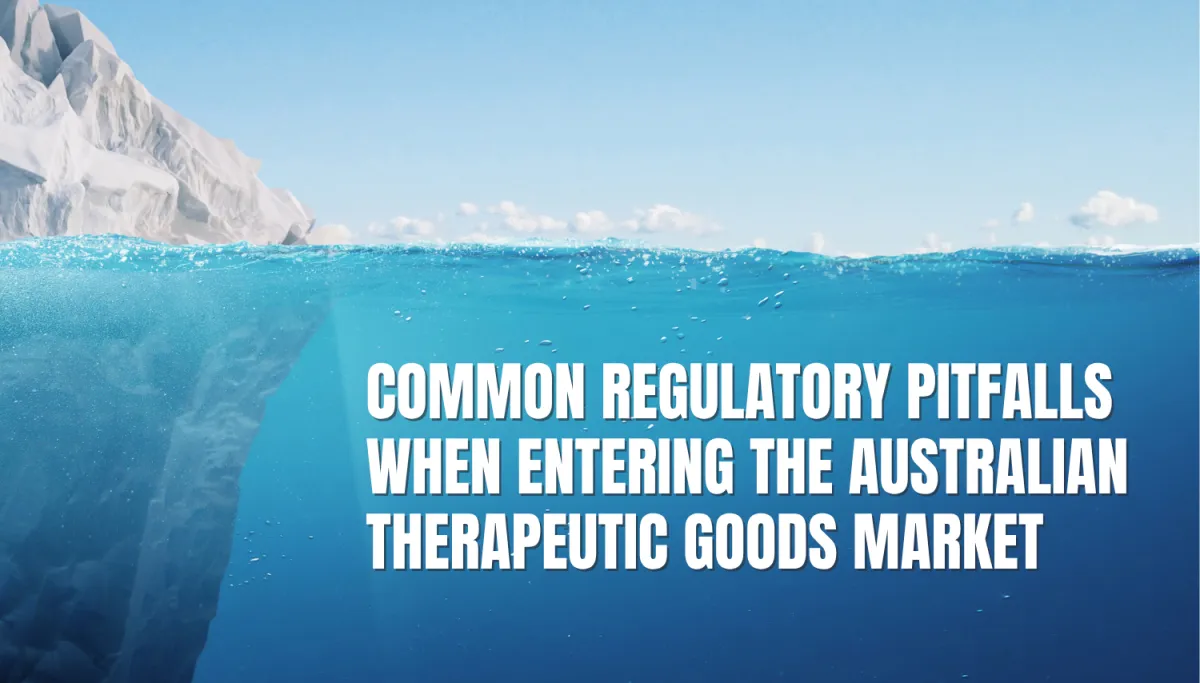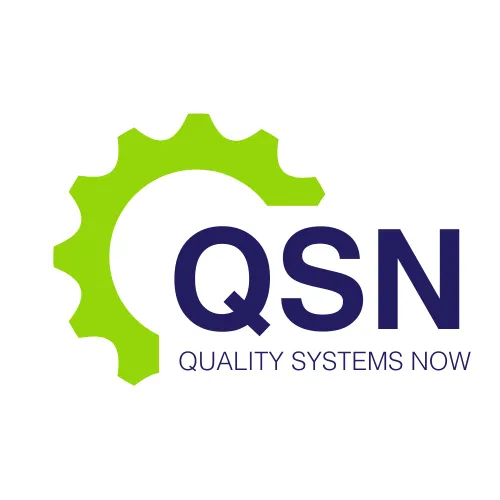NEWS

Common Regulatory Pitfalls When Entering the Australian Therapeutic Goods Market
Introduction
The Australian market for therapeutic goods offers significant opportunities for international manufacturers, particularly those from the United States, looking to expand their reach into a stable, well-regulated healthcare environment. However, despite the similarities between regulatory authorities such as the U.S. Food and Drug Administration (FDA) and Australia’s Therapeutic Goods Administration (TGA), companies often face unexpected challenges that can delay or derail their market entry. These challenges arise not from technological shortcomings, but from gaps in regulatory understanding, compliance missteps, and insufficient local preparation.
At QSN Academy, we specialise in preparing American pharmaceutical manufacturers, biotechnology developers, and testing laboratories for successful entry into the Australian market. This article examines the most common regulatory pitfalls encountered and offers insights into how proper upskilling and strategic alignment can mitigate compliance risks.
Misunderstanding the Role of the Australian Sponsor
One of the most overlooked aspects of Australian market entry is the legal and operational role of the Australian sponsor. Unlike in some jurisdictions where the manufacturer remains the sole point of contact, the TGA requires a local sponsor to be listed on the Australian Register of Therapeutic Goods (ARTG) and take full responsibility for regulatory compliance.
Failure to choose an experienced and aligned sponsor can lead to miscommunication, delayed responses to regulatory requests, and poor management of post-market obligations. In many cases, sponsors are selected based on cost or convenience rather than regulatory competency. Upskilling internal staff on sponsor obligations and due diligence in sponsor selection is critical. QSN Academy provides detailed training modules on how to establish and manage effective sponsor relationships to ensure aligned compliance throughout the product lifecycle.
Overreliance on FDA Compliance as a Substitute
Many U.S.-based companies entering the Australian market assume that FDA compliance automatically satisfies TGA expectations. This assumption is false and leads to rejection or additional scrutiny during applications and audits. While both regulators are part of the Pharmaceutical Inspection Co-operation Scheme (PIC/S) and share similar GMP foundations, there are distinct differences in areas such as labelling, stability testing requirements, and submission formats.
For example, TGA expects stability studies aligned with ICH climatic zone IVb conditions to reflect Australia's environment, while FDA protocols may not meet this standard. Additionally, Australian product information and consumer medicine information (CMI) documents must follow specific TGA templates and be in accessible, patient-friendly language. QSN Academy offers regulatory comparison workshops to highlight these differences and guide companies in preparing documentation that meets TGA specifications.
Incomplete or Poor-Quality Dossier Submissions
A frequent regulatory stumbling block involves deficient dossier submissions. Whether applying for a prescription medicine, medical device, or complementary medicine, the TGA requires detailed technical documentation structured according to their regulatory frameworks. The Common Technical Document (CTD) format is mandatory for prescription medicines, and specific guidelines must be followed for devices and listed products.
Common errors include:
Omission of required Module 3 data
Poorly written quality overall summaries (QOS)
Incomplete validation reports
Missing justification for manufacturing process parameters
Companies often assign regulatory submission tasks to teams unfamiliar with TGA-specific expectations. Upskilling through scenario-based training on dossier preparation and evaluation readiness ensures that documentation meets regulatory standards before submission. QSN Academy provides practical training on constructing TGA-compliant submissions and responding to Section 31 requests efficiently.
Non-Conformance with Australian GMP Requirements
The TGA mandates that all manufacturing sites supplying medicines to Australia demonstrate compliance with PIC/S GMP. For overseas manufacturers, this typically involves undergoing TGA GMP inspections or providing evidence of inspection by a recognised authority under an MRA.
A critical mistake is assuming that FDA GMP inspections will suffice. TGA inspectors may request additional documentation, including but not limited to:
Detailed deviation and CAPA records
Product quality reviews (PQRs)
Documented quality risk assessments
Environmental monitoring programs aligned with TGA expectations
Non-conformance can result in inspection findings, certification delays, or outright refusal. To prevent this, QSN Academy trains manufacturers in interpreting TGA GMP guidance, preparing for inspections, and developing compliant quality management systems that are tailored to Australian requirements.
Inadequate Post-Market Preparedness
Achieving ARTG listing is not the end of regulatory responsibility—it is the beginning of ongoing vigilance. Many new entrants neglect their post-market obligations, assuming that once a product is listed, no further actions are necessary. However, the TGA mandates:
Timely adverse event reporting
Vigilance reporting for devices
Recall readiness
Ongoing stability monitoring
Annual reporting for certain classes of products
Moreover, TGA frequently audits sponsors and manufacturers to ensure post-market systems are effective and documented. Companies must establish pharmacovigilance and complaint-handling systems that integrate with their local sponsor’s obligations. QSN Academy supports clients by offering upskilling programs in pharmacovigilance, incident reporting, and recall planning, which are aligned with the Australian Code of Good Wholesaling Practice and ISO 13485.
Labelling and Advertising Compliance Issues
Australia has specific labelling requirements that often differ from those in the United States. Medicines must comply with TGO 91 and TGO 92, which specify labelling content, placement, and readability. For example, Schedule 4 (prescription) medicines must include advisory statements, sponsor details, batch number, and expiry date in a format legible under all lighting conditions.
Medical device labels must include the Global Medical Device Nomenclature (GMDN) term and Australian sponsor details. Mislabelled products can be rejected at the border or recalled post-market. Additionally, advertising to consumers is tightly regulated, especially for Schedule 3 or higher substances.
Upskilling commercial teams, graphic designers, and marketing departments on these requirements is essential. QSN Academy offers specialist training in TGA labelling, promotional material review, and compliance with the Therapeutic Goods Advertising Code.
Ignoring Local Data Requirements
Another common pitfall is the failure to consider Australian-specific clinical or non-clinical data requirements. While international data may form the basis of a submission, TGA increasingly demands local data for certain product categories, especially where regional genetics, environmental factors, or clinical practice patterns may influence outcomes.
For example, probiotic or complementary medicine submissions often require justification of local strain viability, and sunscreen products must reflect UV index conditions relevant to Australian latitudes. Similarly, medical devices used in diagnostic algorithms must be validated for the Australian patient population if demographic-specific variables apply.
QSN Academy addresses these needs through training in study design, data evaluation, and preparing bridging justifications. Companies are guided on when and how to conduct supplementary studies or provide literature-based arguments.
Conclusion
Successful entry into the Australian therapeutic goods market requires more than high-quality products or previous FDA approval. It necessitates a deep, operational understanding of the TGA's regulatory landscape, documentation expectations, GMP standards, post-market vigilance, and commercial compliance obligations. The most common regulatory pitfalls—ranging from sponsor selection errors to non-compliance in GMP or labelling—are avoidable with proper upskilling and localised readiness strategies.
QSN Academy provides structured, scientific training programs specifically designed for American companies expanding into Australia. Our training equips regulatory, quality, and commercial teams with the competencies needed to navigate TGA requirements and achieve sustainable compliance. By identifying and addressing these common pitfalls early, companies can accelerate market access, build regulatory trust, and secure long-term success in the Australian healthcare ecosystem.
